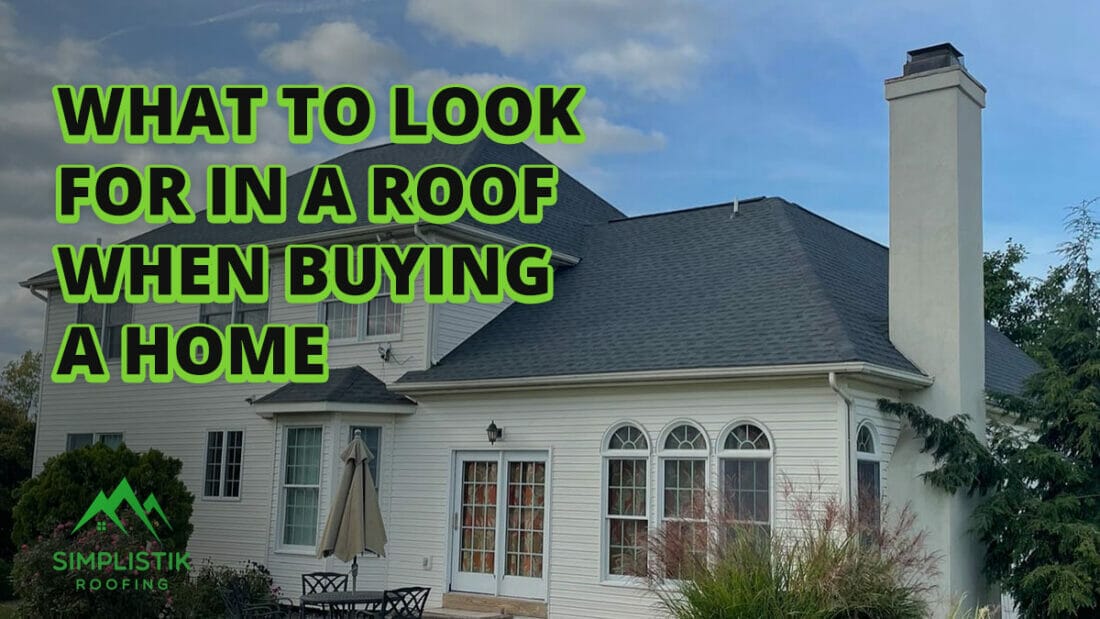What to Look for in a Roof When Buying a Home
When buying a home, there’s much to consider, from location to amenities and structural integrity. One critical yet often overlooked element is the roof. A well-maintained roof not only provides aesthetic appeal but also shields your home from weather conditions, contributing to its overall longevity and value. Here are key factors to consider when assessing the condition of a roof before making a home purchase.
Age of the Roof
The first thing you want to find out is the roof’s age. Roofs are typically designed to last 20 to 30 years, depending on the material used. A roof near the end of its lifespan may require replacement soon, which can be a significant expense. Ask the homeowner about when the roof was last replaced and if they have documentation for this.
Roofing Material
Roofs can be made from a variety of materials such as asphalt shingles, metal, tile, wood, and slate, each with different lifespans and maintenance needs. Asphalt shingles, for instance, are common and relatively affordable but have a shorter lifespan compared to metal or tile roofs. The choice of roofing material can also affect the home’s energy efficiency and insurance rates, so it’s crucial to understand what you’re dealing with.
Signs of Wear and Tear
While a visual inspection from the ground won’t reveal all potential issues, it can give you a general idea of the roof’s condition. Look for signs of wear and tear such as missing, curled, or cracked shingles, moss or algae growth, or rust on metal roofs. Any of these could indicate underlying issues like water damage or poor ventilation.
Interior Inspection
The condition of the roof can also be assessed from inside the house. Visit the attic to check for signs of a leaking roof like water stains, mold, or rot on the roof decking and beams. Light shining through the roof is a definite red flag as it indicates holes or cracks.
Gutters and Downspouts
Examine the gutters and downspouts as they play a significant role in maintaining a healthy roof. They should be clear of debris and correctly installed to direct water away from the home. Granules in the gutters are a sign of excessive roof wear, which can accelerate its aging.
Flashing
Roof flashing, made from metal or rubber, is used to direct water away from critical areas of the roof, like the edges, corners, and valleys, or around chimneys and vents. Improperly installed or damaged flashing is a common source of leaks, so ensure they are in good condition.
Ventilation
A well-ventilated roof helps regulate temperatures in the attic and removes moisture, reducing the risk of ice dams in the winter and helping save energy costs. Inadequate ventilation can lead to a host of problems, including mold, rot, and a shortened roof lifespan.
Professional Inspection
A professional roof inspection is always a smart idea when buying a home. Roofing inspectors have the expertise to spot issues that an untrained eye may miss, providing a more detailed report about the roof’s condition. They can also provide an estimate for any necessary repairs or replacement.
A roof is a significant investment that plays a vital role in protecting your home and maintaining its value. When you’re on the hunt for a new house, don’t overlook the roof’s condition in your buying decision. While a roof in less than perfect condition isn’t necessarily a deal-breaker, it can influence the price negotiations and should be factored into your overall budget.
Remember, buying a home isn’t just about the here and now. It’s also about considering potential future costs and protecting your investment for years to come. So, don’t forget to look up when you’re looking around your potential new home – it could save you from unwelcome surprises down the line.
